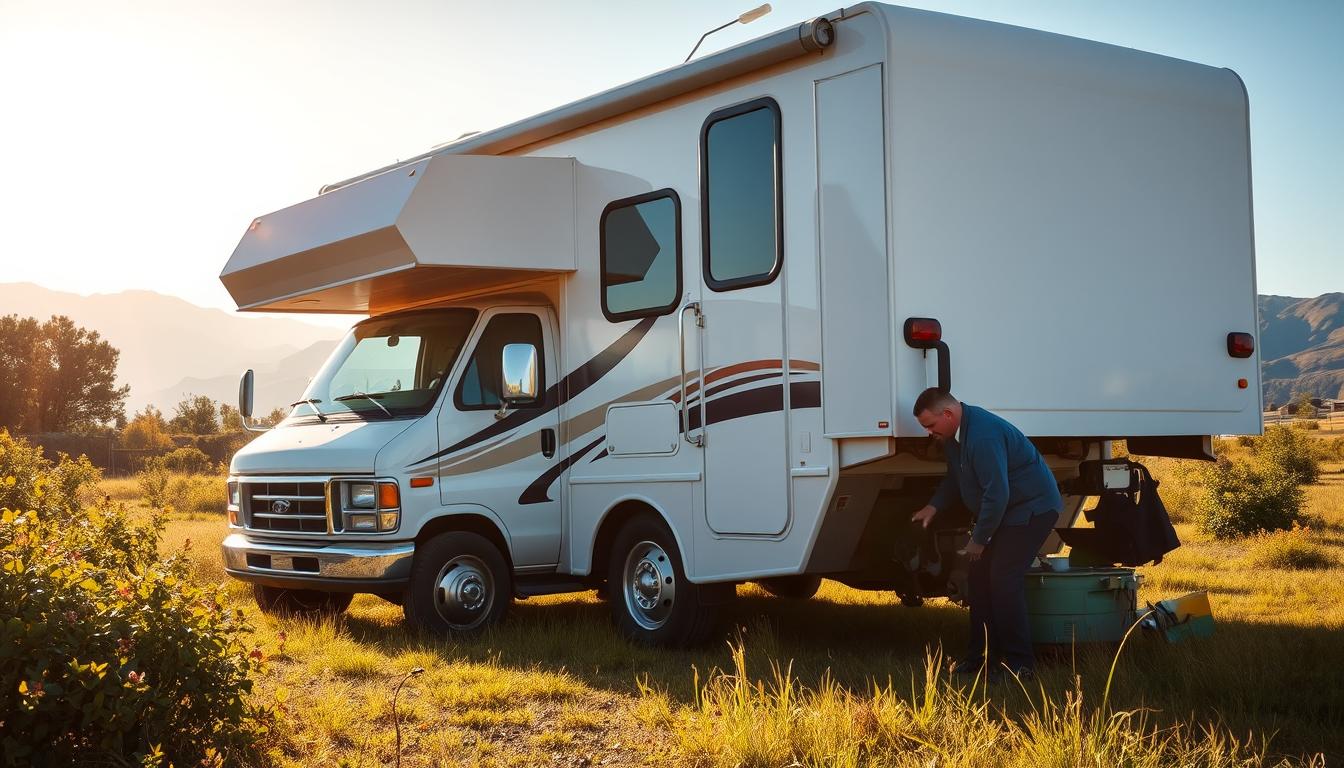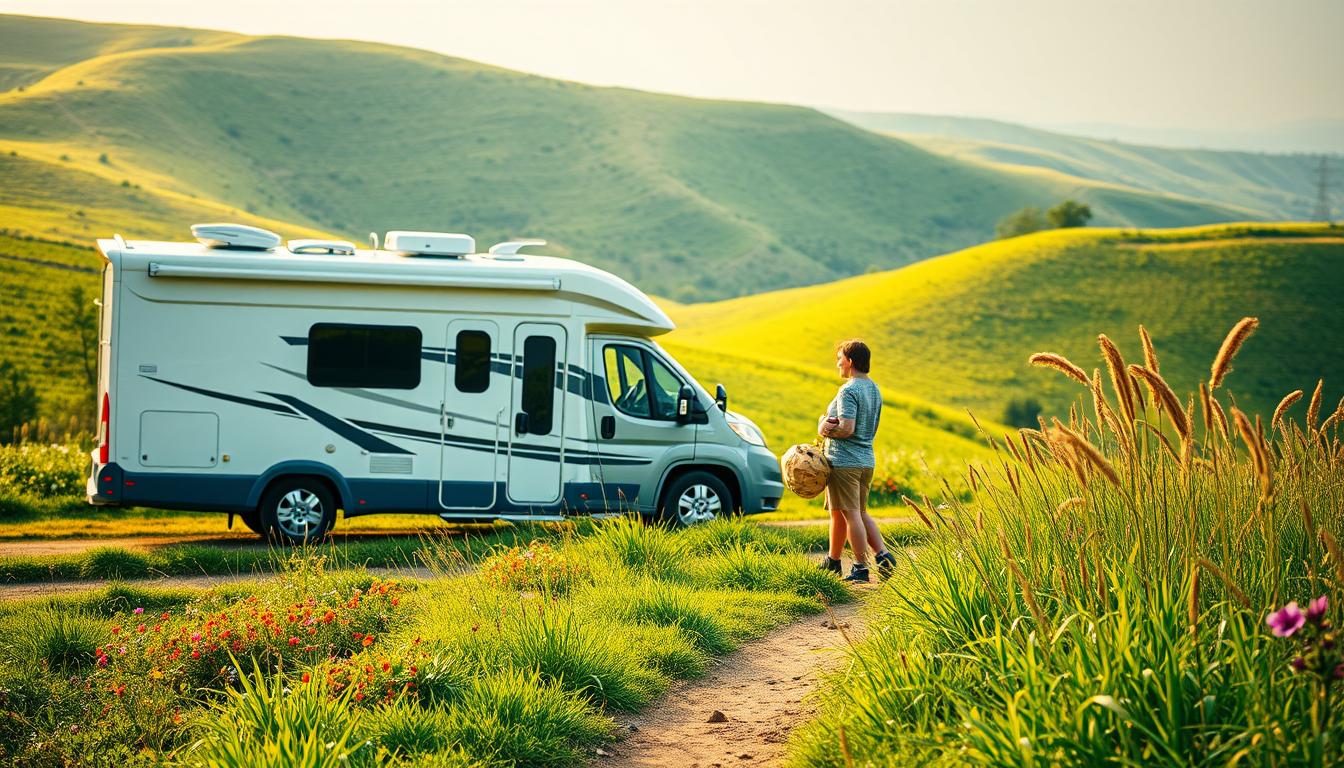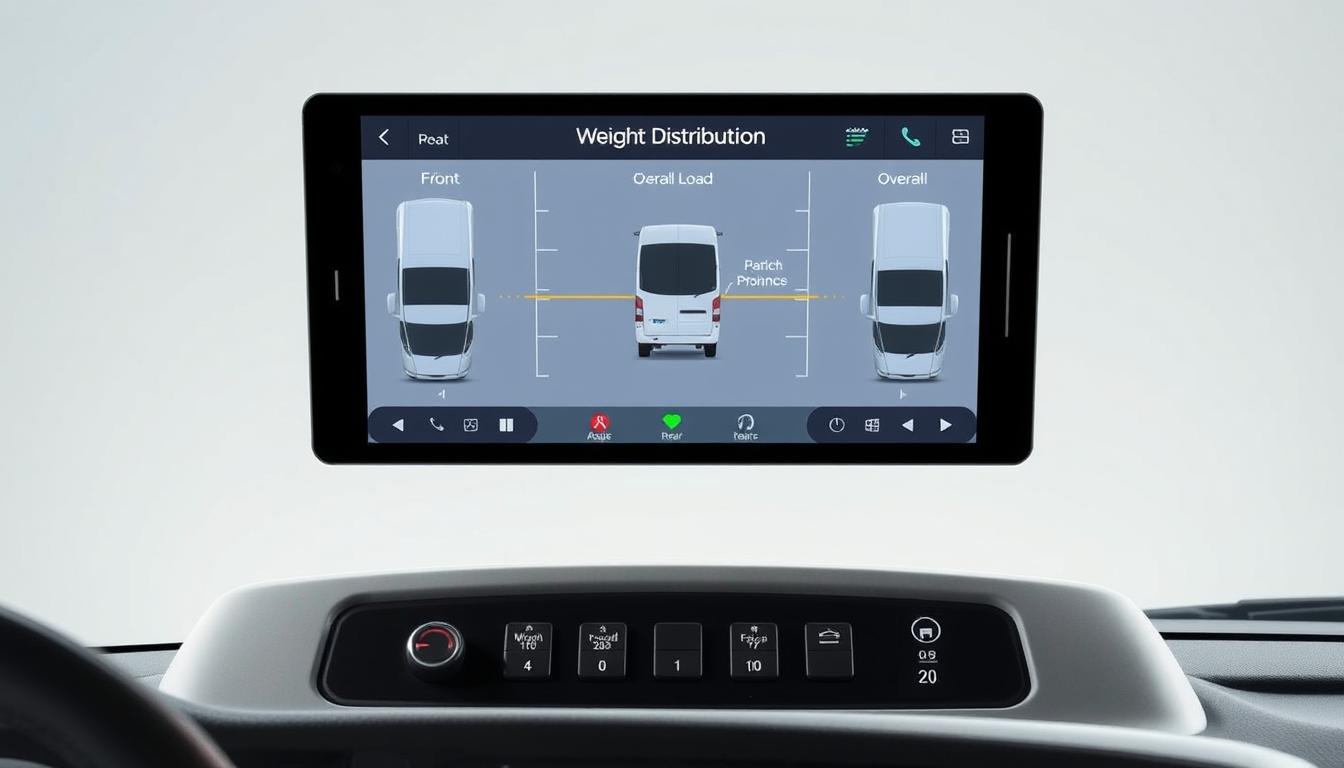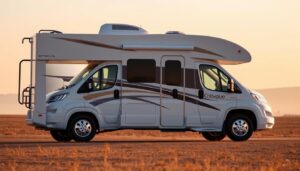Complete preventive maintenance guide to extend your Class C motorhome’s lifespan
Ever thought about how simple checks can save you thousands on repairs for your Class C motorhome? Regular maintenance keeps your motorhome running long and safe for travel. This guide on Class C motorhome care shares key RV maintenance tips to keep your vehicle in top shape. Learn the steps and precautions to avoid unexpected breakdowns and enjoy many trips.
Understanding the Lifespan of Class C Motorhomes
Class C motorhomes usually last between 10 to 20 years. Their longevity depends on the materials and components used, as well as regular maintenance. Knowing what affects their lifespan can help extend it.
With proper care, Class C motorhomes can go up to 200,000 miles. Some even reach over 300,000 miles. The condition of the roads and weather can affect how long they last.
The quality of parts like the engine and interior systems is key. Regular checks, quick fixes, and following maintenance plans help them last longer. Understanding these factors helps owners enjoy their motorhomes for years.
Importance of Preventive Maintenance
Preventive maintenance is key to keeping your Class C motorhome in top shape. Regular checks and quick fixes help avoid big problems. This approach not only fixes issues but also boosts RV safety for everyone.
A well-kept motorhome runs smoothly and safely on the road. It cuts down on breakdowns, making trips more enjoyable. This means less stress and more fun for everyone.
Also, regular maintenance keeps your motorhome’s value high. This makes it a smart choice for anyone who loves to travel. For more tips on caring for your Class C motorhome, see this useful guide.
Regular Engine and Chassis Maintenance
Keeping your Class C motorhome’s engine and chassis in top shape is key for both performance and safety. Simple tasks like oil changes and brake checks can make a big difference. They help your motorhome run well and give you peace of mind while driving.
Changing Oil and Oil Filters
Changing the oil in your motorhome’s engine is a must. It’s best to do this every 3,000 to 4,500 miles. This keeps the engine clean and running smoothly. Don’t forget to replace the oil filters too. Skipping these steps can cause engine damage and lower performance.
Checking Brakes and Battery
Brake inspections are a must. Certified RV mechanics should check them regularly. This helps spot any problems that could affect safety. Good brakes mean your motorhome can stop safely when needed.
Battery care is also vital. Owners should check the battery connections often. Also, replace deep cycle batteries every 3 to 5 years to avoid sudden failures.
Maintaining Your Motorhome Roof
Keeping your RV roof in good shape is key to its long life. Regular checks help find problems early, stopping leaks and big damage. Try to check your motorhome’s roof twice a year to keep it in top shape.
Periodic Roof Inspections
It’s important to regularly check your motorhome’s roof for issues. Clean it gently with mild soap to avoid dirt buildup. Look closely at seals and seams, as they’re prone to water leaks. Fix any cracks or damage right away with a good sealant to stop leaks.
Make a simple checklist for your roof checks. Include tasks like:
- Cleaning the roof surface
- Inspecting seals and caulking
- Checking for any physical damage
- Applying sealant where necessary
Sticking to a regular check-up schedule and fixing problems quickly will keep your roof strong. This protects against water damage and expensive fixes later on.
Preventive Maintenance Guides for Class C Motorhome
A good Class C motorhome maintenance guide is key to keeping your vehicle in top shape. It helps extend its life. Regular care ensures all parts work well, avoiding expensive repairs and replacements.
Begin by checking the engine and drivetrain, following the maker’s advice. This is the base of good maintenance. It keeps important systems running smoothly. Things like oil changes, fluid checks, and brake and transmission inspections are crucial.
Don’t forget the motorhome’s outside, especially the roof. Regular checks can stop leaks and damage from the weather. Adding these steps to your routine can make a big difference.
But RV care isn’t just about the mechanics. Keeping the inside systems, like plumbing and electricity, in check is also important. Regular checks of these systems make your trips more comfortable and safe.
Optimal Tire Care and Maintenance
Keeping your RV tires in good shape is key for safe and efficient travel. The state of your tires impacts how well your RV drives, how much fuel it uses, and your safety. Checking tire pressure regularly and following maintenance steps can avoid serious issues like blowouts or uneven wear.
Sticking to the manufacturer’s inflation guidelines and regular checks can make your tires last longer. This is crucial for your safety and the performance of your RV.
Checking Tire Pressure Regularly
Make sure to check your tire pressure before every trip. Under-inflated tires can cause blowouts, while over-inflated ones may wear unevenly. Keeping the right pressure improves safety and saves fuel. Use a good tire pressure gauge and compare it to the numbers on your tire or in your RV’s manual.
Don’t forget to visually inspect your tires too. Look for wear, cracks, or damage. Regular tire rotations help wear them evenly, ensuring better grip and stability. By following these steps, you can make your RV trips safer and more enjoyable.
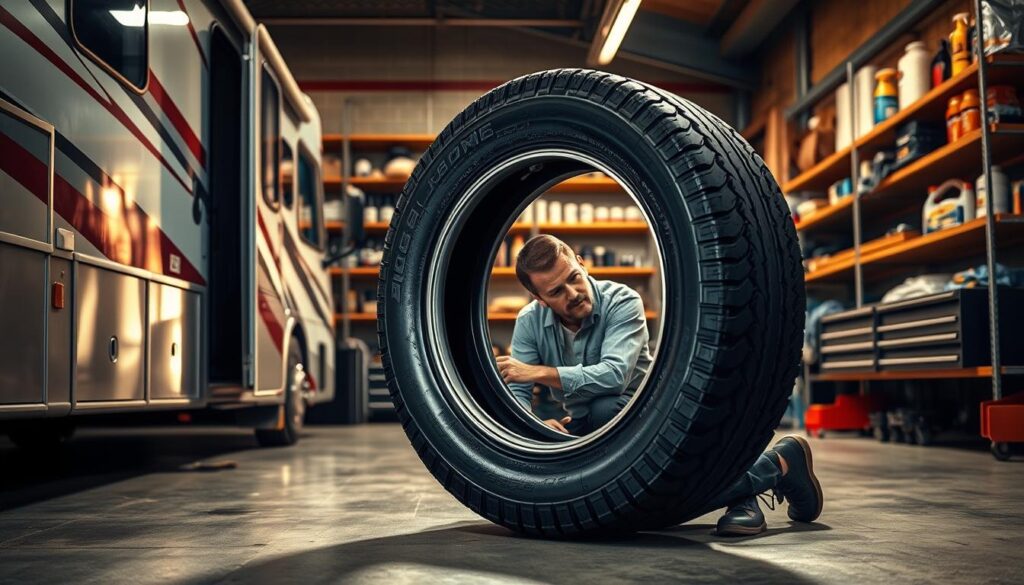
Plumbing and Water System Maintenance
Keeping your RV’s plumbing and water systems in good shape is key for a smooth trip. Regular checks help spot problems early, keeping everything running right. Winterizing your water system is especially important as it gets colder.
It’s crucial to care for your water tank all year. Look for leaks and use RV toilet paper to avoid clogs. This keeps your waste system working well, saving you time and hassle on the road.
Winterizing Your Water System
Winterizing means several steps to protect your plumbing from freezing. Start by draining all water from faucets and the water heater. This step removes water that could freeze and burst pipes.
After draining, add RV-specific antifreeze to the system. This antifreeze is safe for drinking water and prevents freezing in hard-to-drain spots.
Don’t forget to care for your water tank all year. Regular checks for leaks and using RV toilet paper can help. A well-maintained waste system makes traveling easier and more enjoyable.
In short, good plumbing and water system care can make your RV last longer and improve your travel experience.
| Step | Action | Purpose |
|---|---|---|
| 1 | Drain Water | Eliminate remnants to prevent freezing |
| 2 | Add Antifreeze | Protect plumbing from freezing |
| 3 | Check for Leaks | Ensure system integrity and prevent damage |
| 4 | Use RV-Specific Toilet Paper | Avoid clogs in the waste system |
Electrical System Check and Maintenance
Regular RV electrical maintenance is key for your Class C motorhome’s smooth operation. It’s important to check electrical systems often to catch issues early. Start by looking over connections and wiring for any signs of wear or damage.
Keeping the electrical system clean and free of debris is also crucial. This helps avoid any disruptions.
Battery care is vital for your motorhome’s electrical health. Always check the battery’s fluid levels and clean the terminals to prevent oxidation. Also, store the battery properly to protect it from pests like rodents.
Using surge protectors when connecting to campsite power adds an extra safety layer. This step helps prevent overvoltage and other electrical problems. By following these tips, you can keep your RV’s electrical systems reliable and efficient on your travels.
Taking Care of Interior Appliances
Keeping your RV’s appliances in good shape is key. Regular cleaning and checks on items like the fridge, stove, and microwave stop big problems. A clean stove and fridge work better and make cooking on the road more fun.
Regular checks keep everything running smoothly, saving you from expensive fixes later. Look at wiring and air flow to make appliances last longer. Cleaning appliances also cuts down on fire risks and keeps you safe on the road.
To keep your motorhome kitchen in top shape, replace old parts quickly. Make sure seals are tight and clean spills to avoid messes. This way, you keep your motorhome cozy and your travels enjoyable.
Seasonal Maintenance Tips for Your RV
Seasonal RV maintenance is key to keeping your motorhome running well. To prepare for winter, you need to take a few important steps. These steps help protect your RV from cold weather damage.
Preparing for Winter
Winter RV care starts with draining the water system to avoid freezing and burst pipes. Then, remove the battery and store it in a dry place. This keeps it working well and extends its life.
Sealing any entry points for pests is also crucial. This keeps critters out during the cold months. Using RV covers can also protect against snow and moisture damage. These covers act as a shield, reducing wear and tear from the elements.
Post-Trip Cleaning and Maintenance
Proper RV post-trip care is key to keeping your motorhome in top shape. After each trip, spend time on cleaning and maintenance to avoid big problems. Start by checking all water connections for leaks. Fixing these early can save you trouble later.
Cleaning the inside of your motorhome first is important. Use gentle cleaners to avoid damaging surfaces. Make sure to clean kitchen appliances and bathrooms well to prevent odors and mold. Then, check if all appliances are working right to spot any wear or issues.
Outside, wash your motorhome to get rid of dirt and grime. Also, look for any damage to seals or the roof that could cause leaks. Taking care of your RV after each trip keeps it ready for your next adventure.
Storage Guidelines for Your Class C Motorhome
Storing your Class C motorhome right is key to keeping it in good shape. Using the right RV storage tips can prevent damage. A dry, well-ventilated spot is best to avoid mold and mildew.
This approach helps keep your vehicle strong and comfortable for your next trip. It’s all about taking care of your motorhome.
Choosing the right storage methods is important. A good cover protects against UV rays, rain, and debris. Make sure it fits well and lets air in while keeping things safe.
Check on your motorhome often while it’s stored. Keep an eye on tire pressure, battery, and fluids. Doing this shows you care and helps your motorhome last longer.
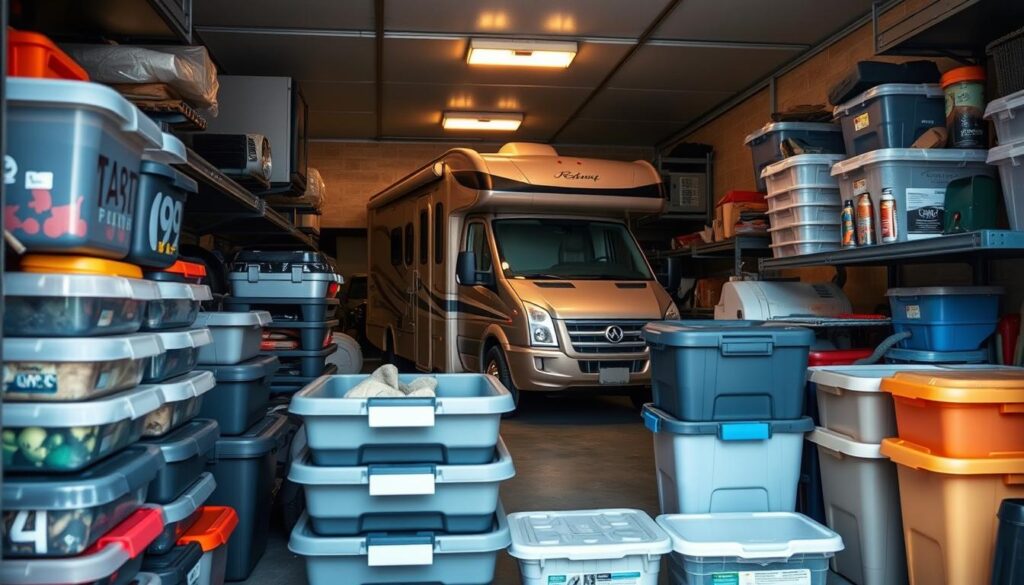
Using RV Covers for Protection
RV covers are a must-have to protect your motorhome from harsh weather. They keep your RV safe from UV rays, dirt, and debris. This helps keep your vehicle looking new and shiny.
Choosing the right cover is key. A good fit prevents moisture buildup, which can cause mold and mildew. This keeps your RV in top shape. Plus, using covers for storage can make your RV last longer. So, getting quality RV covers is a smart move for any RV owner.
Monitoring Rust and Corrosion Levels
Keeping your motorhome in top shape is more than just routine checks and fixes. It’s crucial to prevent rust, especially if your RV is often in wet conditions. You should regularly check for corrosion, especially under the car and at roof seams where water can collect. If you ignore these areas, you could face serious damage later on.
By taking a structured approach to caring for your motorhome, you can extend its life. Make sure to inspect these high-risk spots at least once a month. Catching rust early can prevent costly repairs down the line.
Here is a simple guide to help you in monitoring corrosion:
| Inspection Area | Frequency of Check | Recommended Action |
|---|---|---|
| Undercarriage | Monthly | Clean and treat any rust with an anti-corrosion spray |
| Roof Seams | Every Three Months | Apply sealant if any cracks appear |
| Wheel Wells | Monthly | Inspect for any signs of wear and treat with rust-proof coating |
| Door Frames | Every Six Months | Clean and lubricate to avoid corrosion |
Regular checks and quick action are key to stopping rust from harming your vehicle. Protecting your investment means being diligent and knowing how to prevent rust. Stay on top of maintenance to keep your motorhome in great shape.
Conclusion
Keeping a Class C motorhome in good shape is key to its long life. This guide has shown how to prevent problems and keep it running well. It helps owners enjoy their travels safely and for a long time.
Regular checks on the engine, chassis, plumbing, and electrical systems are crucial. They improve performance, safety, and reliability. This care makes every trip enjoyable.
Being proactive with maintenance pays off in many ways. It extends your motorhome’s life and makes your travels more rewarding. With the right care, every journey becomes a memorable adventure.
FAQ
How long do Class C motorhomes typically last?
Class C motorhomes usually last between 10 to 20 years. This depends on how much you use it, its quality, and how well you maintain it. If you take good care of it, it can go up to 200,000 miles or more. Some might even last up to 300,000 miles under the best conditions.
Why is preventive maintenance important for my motorhome?
Keeping your Class C motorhome in top shape is key. Regular checks and fixes help avoid big problems. They also make sure you’re safe on the road and keep your motorhome’s value high.
How often should I change the oil in my Class C motorhome?
Change your oil every 3,000 to 4,500 miles. Also, replace oil filters as needed. This keeps your engine running smoothly.
How can I maintain my motorhome roof?
Check your roof twice a year for damage or leaks. Clean it gently with mild soap. Make sure to seal any leaks right away to avoid water damage.
What should I do to maintain tire safety?
Always check your tire pressure before driving. Make sure it’s at the level the maker suggests. Look for wear and do tire rotations to prevent blowouts and even wear.
How can I prevent plumbing issues in my motorhome?
Regularly check your plumbing system to catch problems early. Winterizing your water system by draining it and adding antifreeze helps protect against freezing.
What is involved in checking the electrical system?
It’s important to regularly check your electrical system for damage or malfunctions. Use surge protectors when using campsite power. Also, store things properly to keep rodents away.
How do I take care of interior appliances in my RV?
Keeping appliances like the fridge and stove in good shape is crucial. Clean them often, check if they’re working right, and replace any worn-out parts. This keeps your travel space nice.
What steps should I take to prepare my RV for winter?
To get ready for winter, drain your water system, remove and store your battery right, and seal up any pest entry points. Using RV covers also helps protect against snow and moisture.
How can I ensure proper storage for my Class C motorhome?
Store your RV in a dry, well-ventilated spot to avoid mold and mildew. A good cover also protects it from the elements when it’s not in use.
What role do RV covers play in maintenance?
RV covers are key in protecting your motorhome from weather, UV rays, and debris. Choose a cover that fits well to prevent moisture and dirt buildup.
How can I monitor rust and corrosion on my motorhome?
Look for rust and corrosion, especially in wet areas like the undercarriage and roof seams. Treat any rust quickly with the right solutions to keep your motorhome strong.
